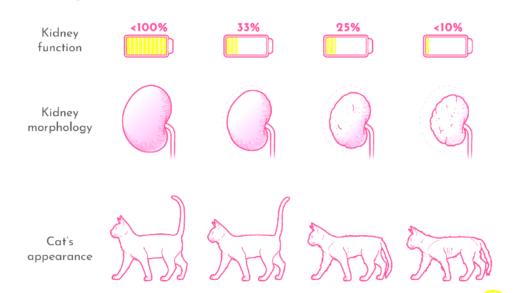Mastering jigsaw puzzles involves effective strategies such as sorting pieces, finding edges, using colors, and managing your workspace. Essential tools enhance the experience, while establishing a routine and mixing in fun challenges keeps puzzling engaging and enjoyable.
Sorting Pieces: Why It Matters
Jigsaw puzzle strategies emphasize the importance of sorting pieces to enhance the puzzle-solving experience. Organizing pieces not only saves time but also reduces frustration. When you take the time to sort, you create a system that allows your brain to work more efficiently.
Here are some effective sorting techniques:
- Color Sorting: Group pieces by color. This method helps in quickly identifying which pieces might fit into specific areas of the puzzle.
- Edge and Corner Pieces: Separate these pieces first. Edge pieces form the boundary of the puzzle, making them crucial for the starting point.
- Shape Sorting: Organize pieces by their shape. Some puzzles have unique shapes that can be matched more easily when grouped together.
By implementing these sorting techniques, you streamline the puzzle-solving process. It becomes easier to visualize where each piece might fit. Ultimately, a well-organized workspace can lead to a more enjoyable and satisfying puzzling experience.
Finding Edges and Corners: Quick Tips
Finding edge pieces in puzzles is a vital skill that every puzzler should master. Edge pieces create the frame and help establish the overall layout of the puzzle. Here are some quick tips for efficiently locating these crucial pieces:
- Visual Inspection: Scan through the pile of pieces and look for flat edges. This visual cue is your first step in identifying edge pieces.
- Sorting by Orientation: Once you identify edge pieces, further sort them by orientation (top, bottom, left, right) to streamline assembly.
- Color and Pattern Matching: Use the color and patterns on the pieces to determine where they might fit within the edge of the puzzle.
With practice, these techniques will help you find edges and corners faster, laying a solid foundation for the rest of the puzzle.
Colors and Patterns: Your Best Friends
Utilizing colors and patterns is one of the most effective jigsaw puzzle strategies for identifying where pieces fit. Colors can guide your eyes to the right sections of the puzzle, making it easier to connect pieces. Here’s how to make the most of this strategy:
- Identify Dominant Colors: Look for pieces that share a common color. This can help you quickly locate sections of the puzzle that belong together.
- Pattern Recognition: Familiarize yourself with the image on the puzzle. Recognizing recurring patterns can guide you in placing pieces accurately.
- Use Contrast: High contrast colors can make it easier to see which pieces fit together. For example, a bright blue piece might stand out against a muted background.
Incorporating these techniques into your puzzle-solving routine can significantly improve your efficiency and enjoyment. Remember, colors and patterns are not just decorative; they are essential tools in your puzzle arsenal.
Organizing Your Space: Tidy Up for Success
Managing your workspace is crucial for effective puzzle-solving. A clean and organized area allows you to focus and enhances your overall experience. Here are some tips to keep your puzzle area tidy:
- Designate a Puzzle Zone: Choose a specific table or surface for your puzzles. This dedicated space minimizes distractions and keeps your pieces safe.
- Use Containers: Utilize trays or bowls to sort pieces. This prevents pieces from scattering and makes it easier to find what you need.
- Lighting Matters: Ensure your workspace is well-lit. Good lighting helps you see the details on each piece, making it easier to fit them together.
- Limit Clutter: Remove unnecessary items from your puzzle area. A clutter-free space promotes a clearer mind, essential for tackling complex puzzles.
By maintaining an organized workspace, you set yourself up for puzzle-solving success, allowing your creativity and problem-solving skills to shine.
Connecting Pieces: Speeding Up the Process
Methods for connecting jigsaw puzzle pieces can greatly enhance your efficiency. Here are effective techniques to help you connect pieces faster:
- Look for Unique Shapes: Identify pieces with unique shapes that can only fit in specific areas. This can speed up the connection process.
- Match Colors and Patterns: Use colors and patterns as a guide. When you see two pieces that share similar colors or designs, try fitting them together.
- Build Small Sections: Focus on completing small sections rather than the entire puzzle at once. This can provide a sense of accomplishment and make it easier to see where pieces fit.
- Stay Patient: Sometimes, stepping away for a moment can help you return with fresh eyes. This break can lead to new insights into how pieces connect.
Implementing these methods will help you connect pieces more efficiently, turning the puzzle-solving process into a more enjoyable experience.
Breaks: The Secret to Enhanced Focus
Understanding the benefits of taking breaks while puzzling is essential for maintaining focus. Regular breaks can rejuvenate your mind and improve your problem-solving abilities. Here’s why breaks are important:
- Prevent Fatigue: Long periods of concentration can lead to fatigue. Short breaks allow your brain to rest and recharge.
- Gain Perspective: Stepping away can provide a new perspective on the puzzle. You might notice connections that you previously overlooked.
- Boost Creativity: A break can stimulate creative thinking, making it easier to find solutions to challenging sections of the puzzle.
- Improve Mood: Taking time for yourself can reduce frustration and improve your overall mood, making puzzling more enjoyable.
Incorporating breaks into your puzzling routine can enhance your focus and lead to a more satisfying puzzle-solving experience.
Essential Tools for Puzzle Enthusiasts
Jigsaw puzzle strategies can be significantly enhanced with the right tools. Having the proper accessories can streamline your puzzle-solving experience and make it more enjoyable. Here are some essential tools to consider:
- Puzzle Mat: A puzzle mat allows you to roll up your puzzle and store it safely without losing pieces. This is especially useful for larger puzzles.
- Sorting Trays: These trays help you keep your sorted pieces organized. They come in various sizes and can be invaluable for managing the pieces you’ve sorted.
- Light Box: A light box can illuminate the pieces from underneath, making it easier to see patterns and colors. This is especially helpful for puzzles with dark colors.
- Magnifying Glass: For intricate puzzles, a magnifying glass can help you see small details on pieces that might be difficult to discern with the naked eye.
- Puzzle Glue: Once you’ve completed a puzzle, you might want to preserve it. Puzzle glue allows you to mount and display your finished work without damaging it.
By utilizing these tools, puzzle enthusiasts can enhance their experience and efficiency, making every puzzling session enjoyable.
Creating a Puzzle Routine: Finding Your Flow
Establishing a puzzle routine can greatly improve your jigsaw puzzle experience. By incorporating specific habits into your puzzling sessions, you can find a rhythm that makes solving puzzles more enjoyable. Here are some tips to develop a successful routine:
- Set a Dedicated Time: Choose a regular time each week to work on your puzzles. Consistency helps build excitement and anticipation.
- Limit Distractions: Create a comfortable environment free from distractions. This could mean turning off your phone or finding a quiet space.
- Track Your Progress: Keep a log of the puzzles you’ve completed or the time spent on each puzzle. This can motivate you to tackle more challenging puzzles.
- Mix It Up: Try different types of puzzles or varying piece counts. Changing up your routine can keep things fresh and exciting.
- Celebrate Completion: Reward yourself after finishing a puzzle. This could be as simple as treating yourself to a favorite snack or sharing your success with friends.
With these strategies, you can create a puzzle routine that not only enhances your skills but also makes the experience more enjoyable.
Fun Puzzle Challenges: Mixing It Up
To keep your puzzle-solving sessions exciting, consider incorporating fun challenges into your routine. These challenges can add an element of fun and competition, making puzzling even more enjoyable. Here are some ideas to mix things up:
- Timed Challenges: Set a timer and see how quickly you can complete a specific section of the puzzle. This can help improve your speed and efficiency.
- Themed Nights: Organize puzzle nights with friends where everyone brings a puzzle of a specific theme. This can spark conversations and shared experiences.
- Blindfolded Puzzling: For a real challenge, try piecing together a puzzle blindfolded or with limited visibility. It’s a fun way to test your memory and spatial awareness.
- Collaborative Puzzling: Work on a puzzle with family or friends. This not only makes the process faster but also fosters teamwork and communication.
- Custom Puzzles: Create your own puzzles using personal photos or artwork. This adds a personal touch and can make the experience more meaningful.
Incorporating these challenges into your puzzle-solving routine can keep things fresh and engaging, ensuring you always have something new to look forward to.





Comments are closed.